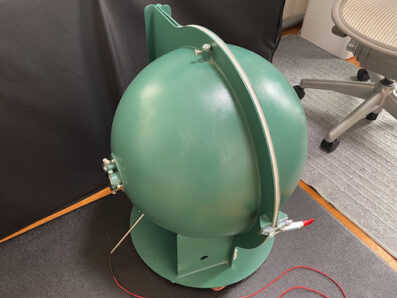
When we choose a light, there are several performance indicators we should focus on. For example, the brightness of the light, the duration of the light, and the weight.
However, when we actually try to select a light, many questions arise about the light’s specifications.
- There are several lights that claim “800 lumens” in their catalogs, but do they all have the same brightness?
- How many hours does the light last in actual operation?
- Even if the light is bright and lasts for a long time, is it heavy and difficult to handle?
In this blog, we measure the lumens (total luminous flux), lighting time, and weight of lights using measurement equipment.
Based on the results, we provide the following information
Measured Lighting Time
Measured Average Lumens
Measured Total Lumen Output
Measured Lumen-to-Weight Ratio (LWR)
These indicators are calculated using this site’s original method.
You can use this information when selecting a light.
Contents
Why do we use our own performance indicators?
Most nominal lumen values provided by light manufacturers are the amount of light immediately after the light is turned on.
But the nominal lumen value has a drawback. The nominal lumen value does not take into account the fact that the brightness of a light dims as it is continuously turned on.
Therefore, we calculate the average lumens during the lighting time and the total lumen output generated during the lighting time.
Lumen Weight Ratio (LWR) is calculated as a performance index that also considers the actual weight of the light.
Measured Initial lumen
Initial lumen is the lumen (total luminous flux) of the light immediately after it is turned on (30 to 120 seconds later).
This is based on the ANSI/PLATO FL1 Standard, a performance evaluation standard for portable lights.

Most of flashlights’ nominal lumen values are the luminous flux at the beginning of lighting.
However, most lights are brightest just after they are turned on. As time goes by, they become dimmer.
For this reason, I don’t emphasize the initial lumen as an indicator of the light intensity of a flashlight.
Measured Lighting time
This is the time it takes for the light to reach 10% of its initial lumen after it is turned on.
The ANSI/PLATO FL1 Standard measurement method is also used for this.
Why do we use “until the light reaches 10% of the initial lumen” instead of “until the light turns off”?
The reason for this is to exclude the time when the light remains on at a light intensity that is not practical.
Measured Average lumens
This is the average lumens during the lighting time.

A light that is bright only immediately after it is turned on may have its initial lumen value listed in the catalog specifications. After the first boost, the light may be rapidly dimmed to extend the lighting time.
This average lumen value can be low for such lights.
Measured Total Lumen Output
This is the cumulative light output generated by the light during its lighting time.
The higher the lumen output of the light and the longer it is on, the higher the total lumen output.
It corresponds to the yellow area in the graph below.

Suppose we have a light that provides 100 lumens for 10 hours.
Its total lumen output would be 1000 (= 100 lumens * 10 hours).

Also, total lumen output = average lumens * lighting time.
Note that total lumen output is a term unique to this site. It is not used in other places.
Measured Lumen-to-Weight Ratio (LWR)
Lumen-to-Weight Ratio (LWR) is the total lumen output divided by the actual weight of the light (grams including fixtures and batteries).
I consider LWR to be a definitive indicator in determining the performance of a light.
For example, a light with a total output of 1000 lumens and a weight of 100 g would have an LWR of 10.0.

A heavier light will have a smaller LWR.
Light output can easily be increased by combining a high-power light with a high-output battery. But it will be a heavy light.
Imagine what would happen if an automobile battery and light were mounted on a bicycle. It would be too heavy to pedal very nimbly.
With the LWR, you can find a light that is bright for its weight.
Conclusion
Based on the actual measurements of the lights, I provide the following information.
- Measured Lighting Time
Time it takes for the light to reach 10% of its initial lumen just after it is turned on - Measured Average Lumen
Average lumens during the lighting time - Measured Total Lumen Output
Cumulative amount of light produced by a light during the lighting time - Measured Lumen-to-Weight Ratio (LWR)
Lumen output divided by the light’s measured weight (grams including fixtures and batteries)
This information can be used as a reference for your light selection.


